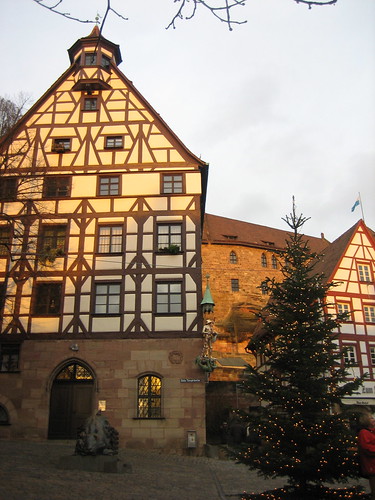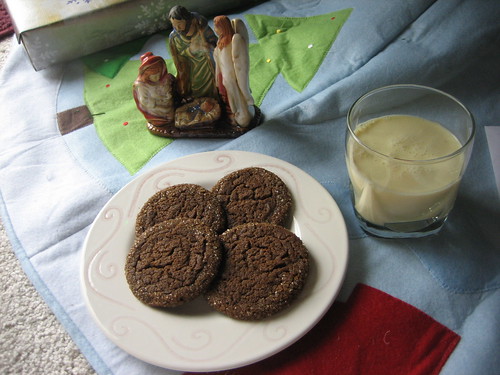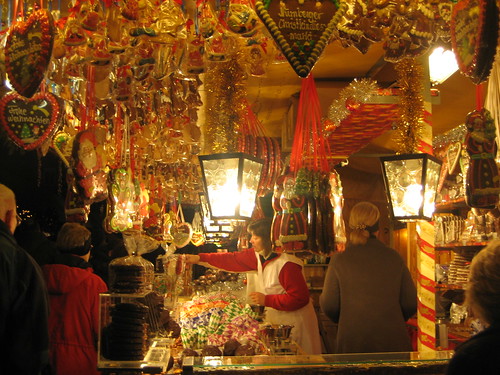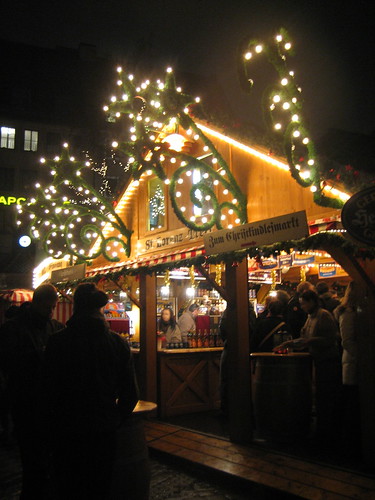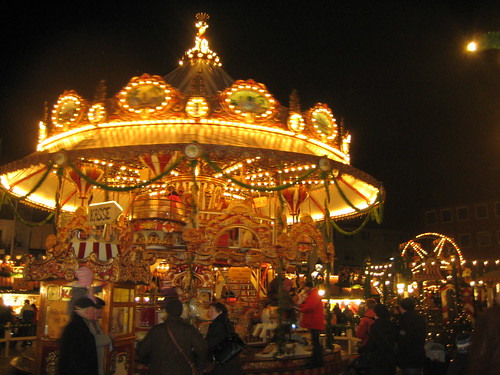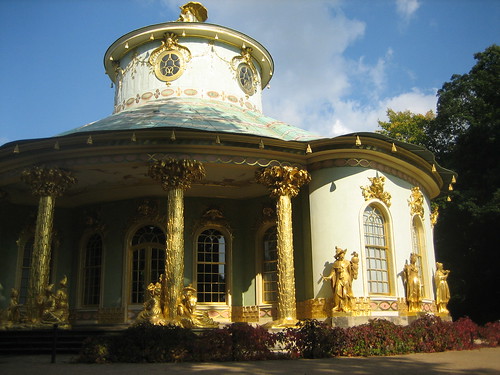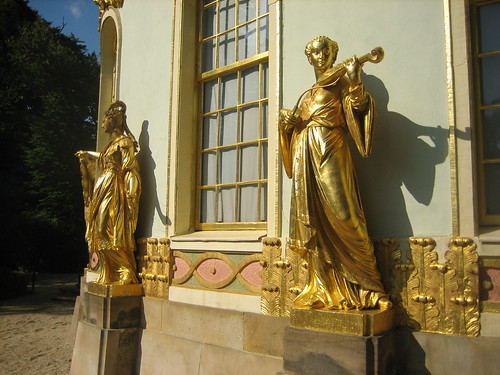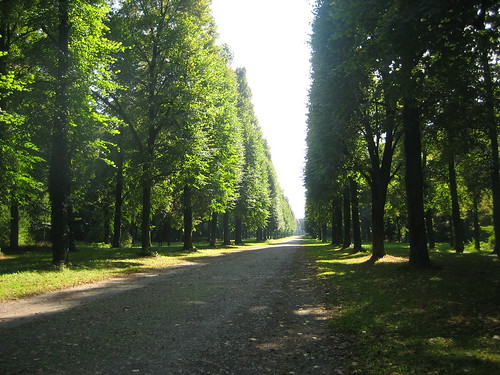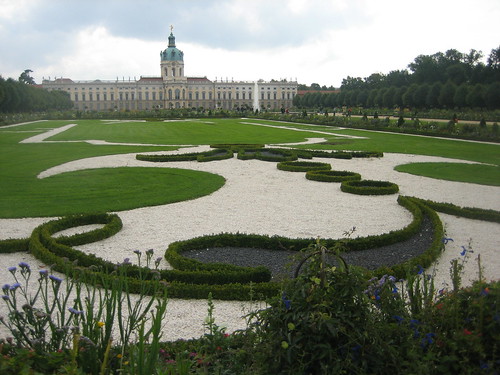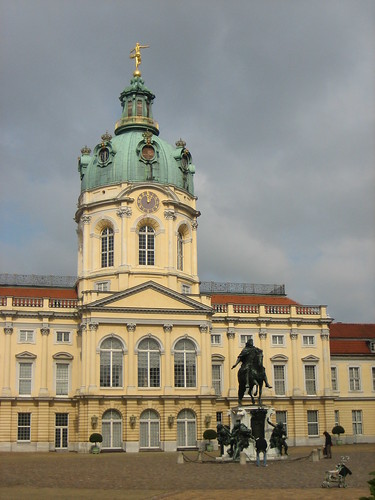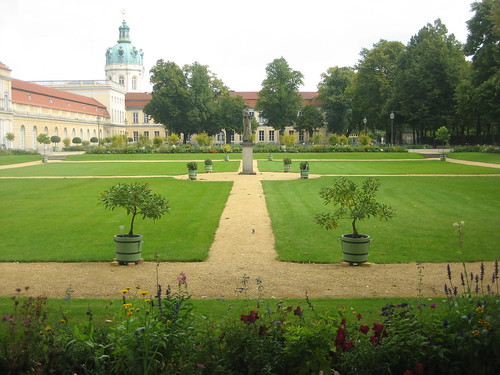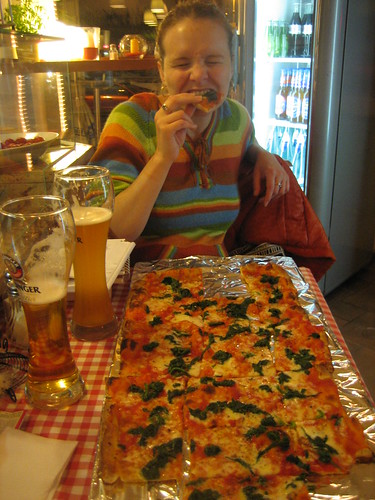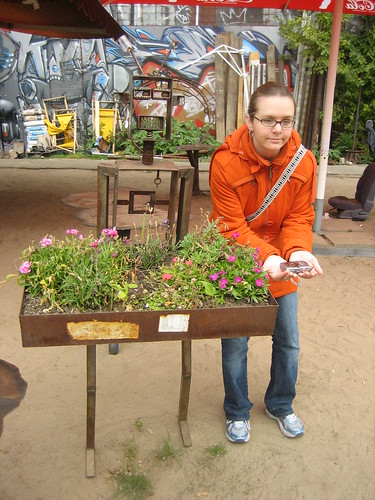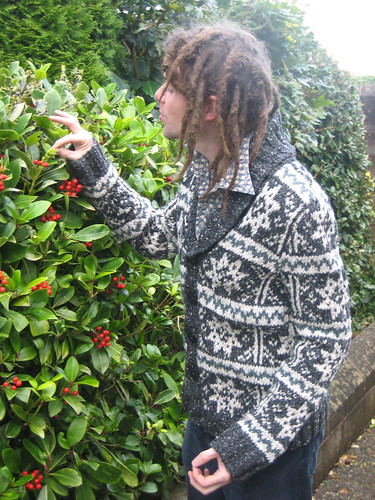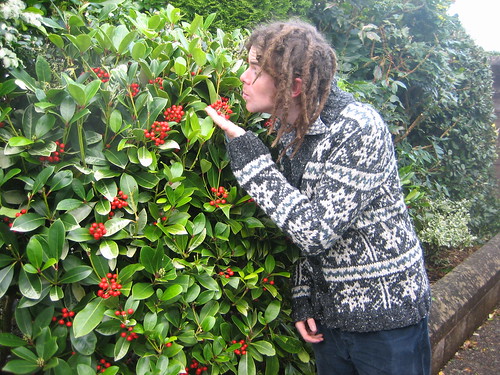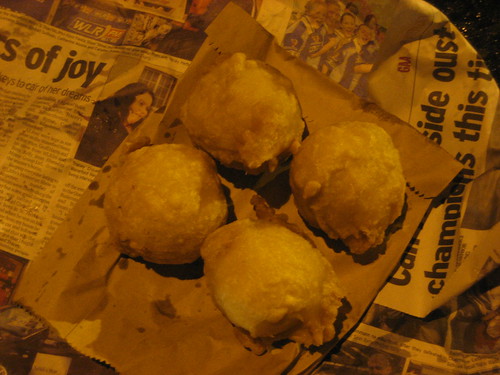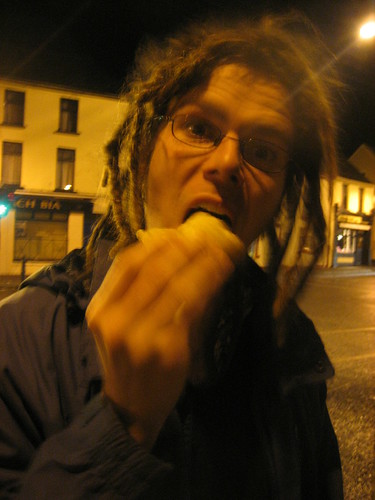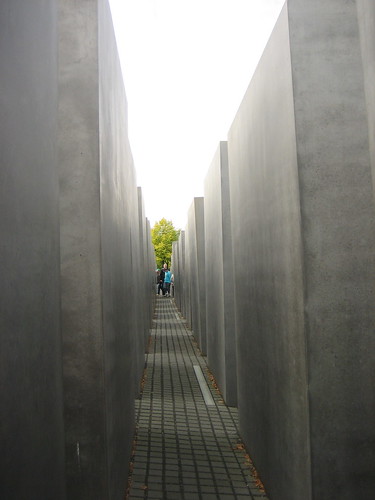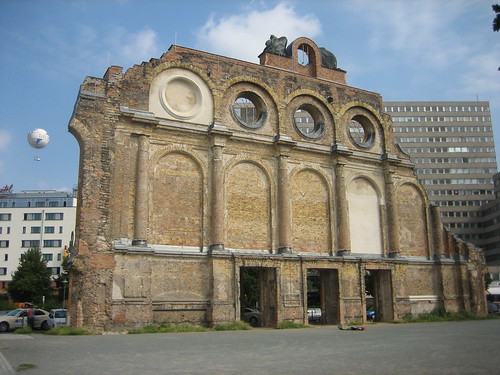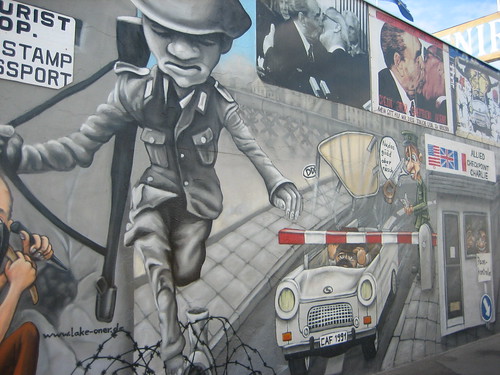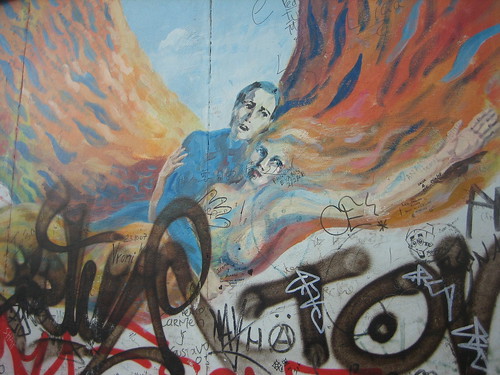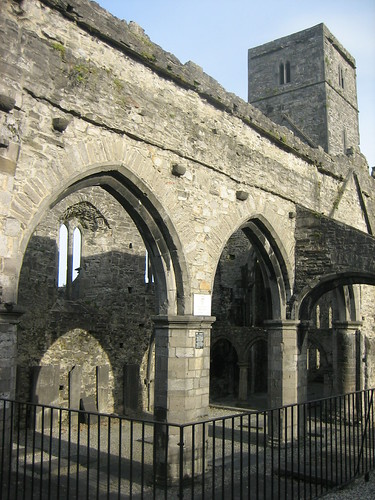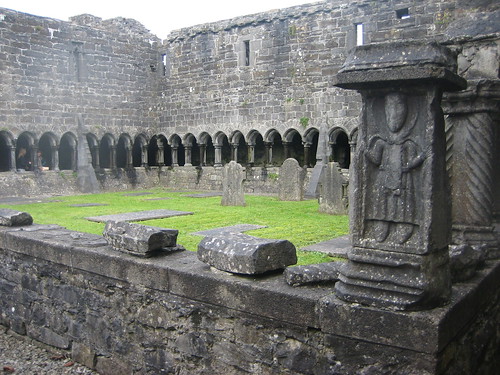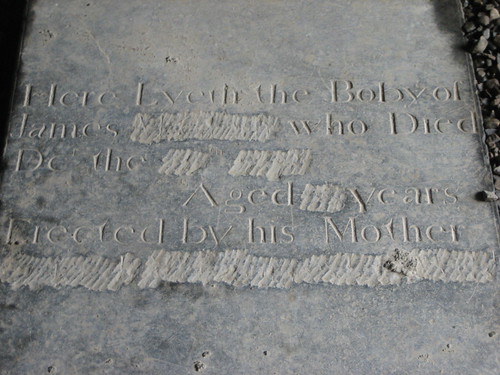My first stop in Bavaria was a little town called Ottobeuren, known for its huge Benedictine monastery. Here's an early-morning view of the basilica from my
hotel window:
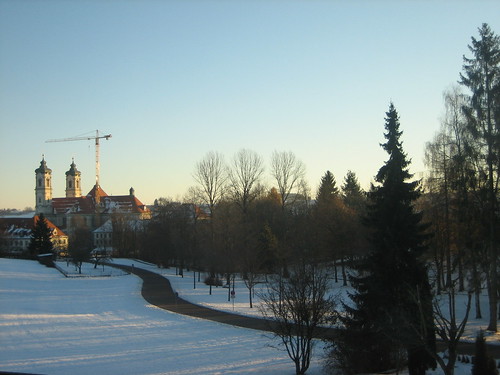
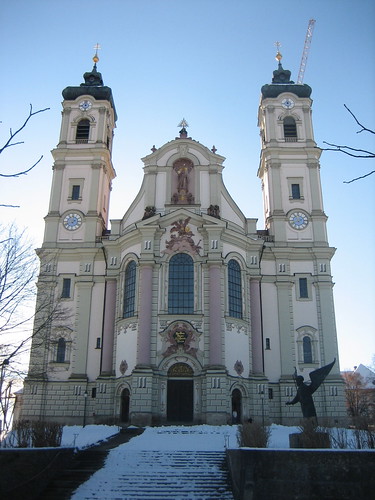
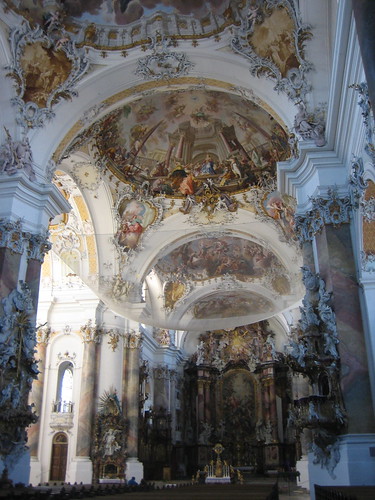
There are a couple reasons why I came here. I first heard about Ottobeuren while listening to
A Spy at the Heart of the Third Reich: the most valuable Allied spy of World War II, Fritz Kolbe, stayed here for a few days and was able to photograph his documents in the perfect privacy of the monastery library. (The narrator pronounced it Ott-oh-
byur-in, but the bus driver didn't understand me when I pronounced it that way. Apparently it's Ott-oh-
bway-rin.)
Anyway, I was intrigued by the monastery's description in the book, and when I googled it, I found another item of interest in the basilica: the complete skeletons of four obscure saints reclining in glass coffins, plus a lot of skulls and other bones in smaller glass cases (the skull of Saint Apollonia, for instance, is crowned with a wreath of jewels). Check out what's left of Saint Maurus below:

I know, it's not a very detailed photograph, but I couldn't bring myself to take any pictures at close range. These glass coffins were horrifying and wonderful all at once. It made me wonder who had exhumed these early saints, wired their bones together, and dressed them in velvet so they could be displayed like this.
According to the website, the monastery library and museum should have been open, but the door was locked and I was too timid to ask the lady at the gift shop if she spoke English. The sign said both gift shop and museum were closed for lunch, but lunchtime was over by the time I visited. I really should have asked, so that at least I would have known for sure that the museum was closed for the winter (or perhaps because of the construction). This is something I struggle with when I travel—this ridiculous timidity. I've come all this way...why not stick out my neck just a little bit further?
Otherwise, Ottobeuren is a quiet, pleasant little town with a few spa-hotels. I was a bit taken aback when I checked my credit card bill to find my stay at the Hotel St. Ulrich was listed as "SANATORIUM OTTOBEUREN"! My room was adorable and cozy, and because I only really came to check out the church and monastery (and there wasn't much else to do anyway), I ended up spending quite a bit of time curled up with my laptop. It was a very productive trip.
Here's a little shrine to St. Ulrich on the path from the church to the hotel:

And here's Ottobeuren's Marketplatz by night:

My time here was wonderfully relaxing, and it was really neat to be able to walk the halls Fritz Kolbe walked sixty-odd years ago. I'm not sure yet how the visit will inform my fiction, but it certainly will somehow.
Next post: Nuremberg and more pictures of the Christkindlesmarkt!
